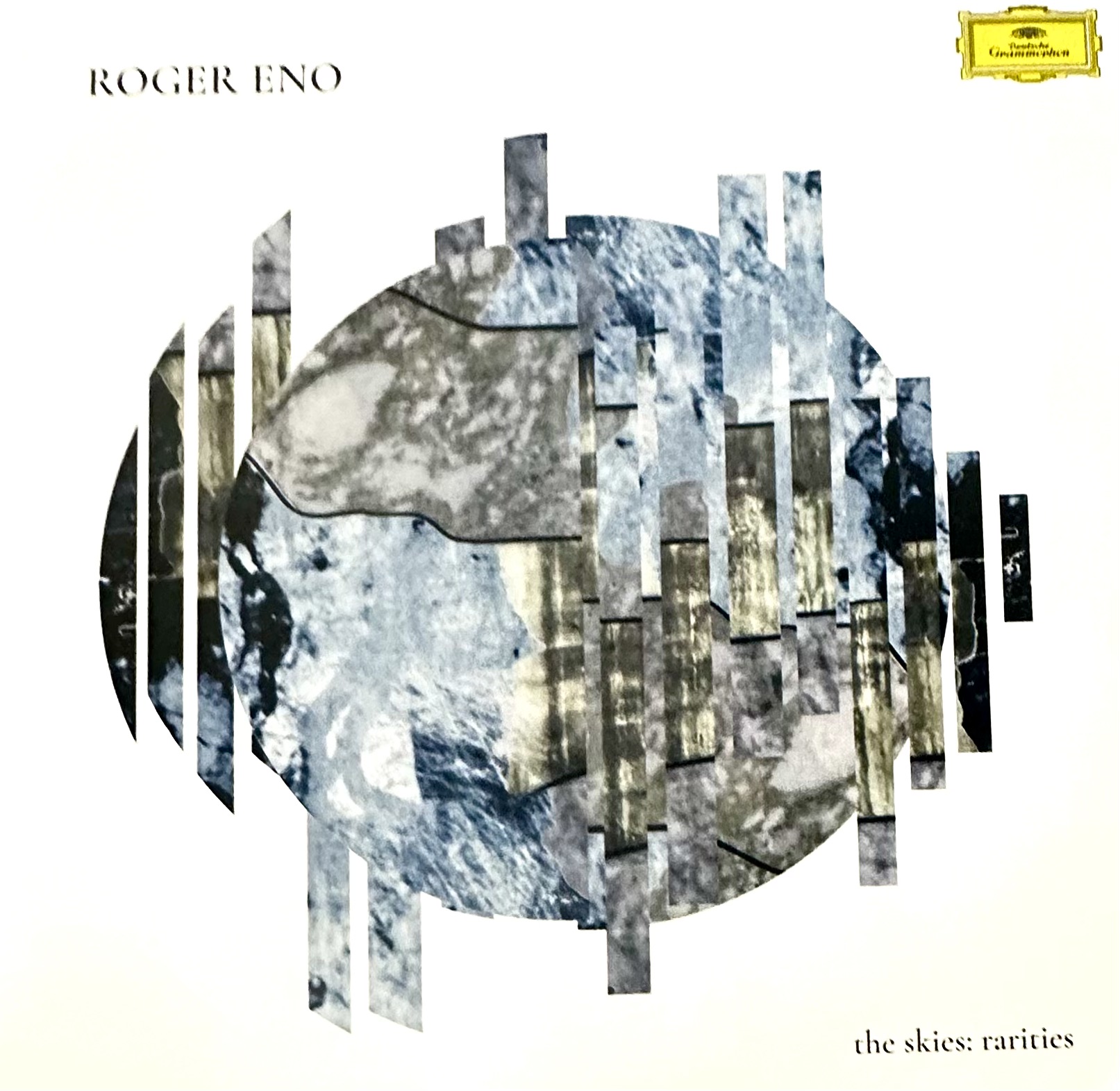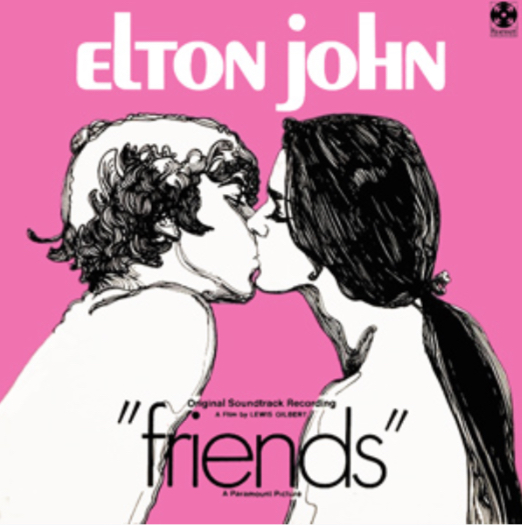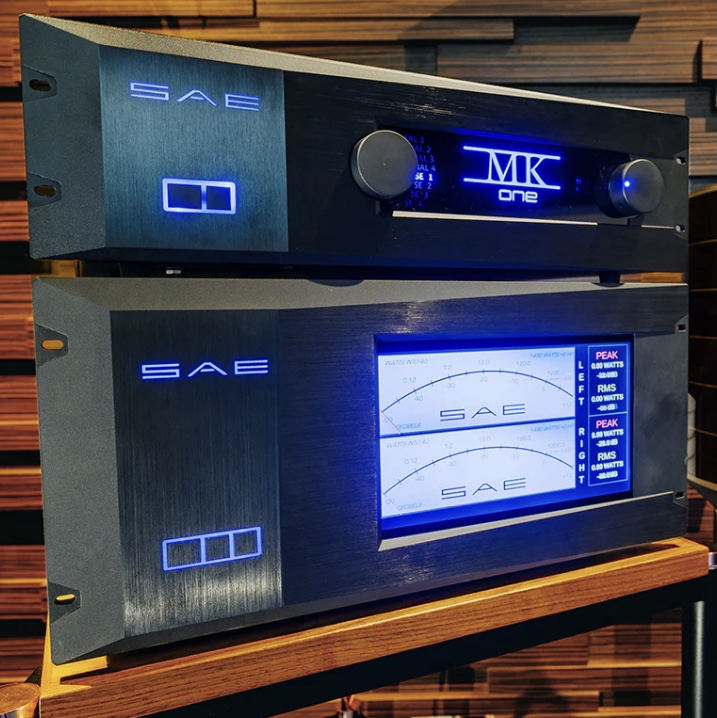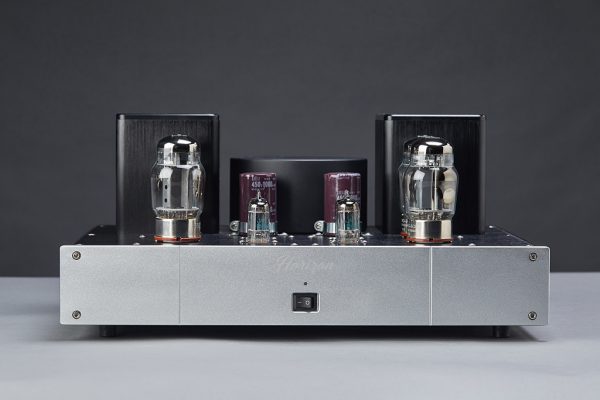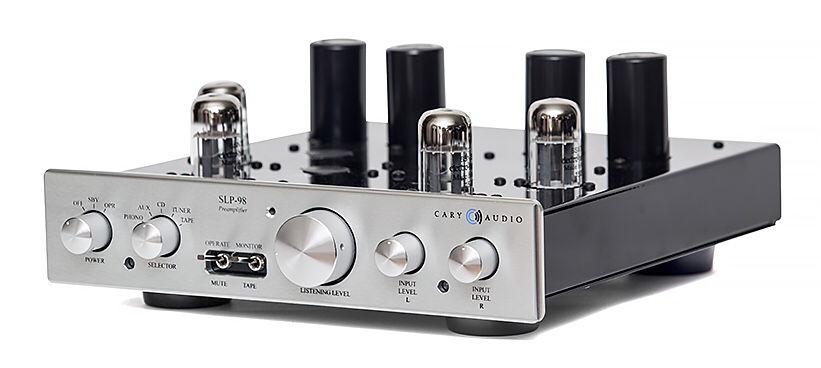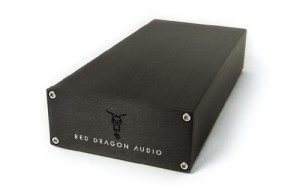Regular readers will be familiar with AGD from Michael Zisserson's previous review on this unit, I seriously recommend it for the deep technical info. You can find it HERE.
I will try to stay away from pulling too much of Michael's work into my analysis of the amplifiers, for the sake of brevity and not being redundant I will simply tag along and add my thoughts, experience, and listening views without too much delving into the development, testing, and science behind the AGD Audion mono-block Amplifiers, and focus more on how they sound. Michael did a fabulous job discussing that information.
As with all things HiFi, everyone has their particular biases. Some folks are die hard tube amp people, some are die hard solid state folks. Whatever stripes you run, most will admit that the term Class D Amplification does not thrill them. It does not, generally speaking, trigger the warm fuzzy feelings of a sweet 300B amp or a 1000 watt per channel solid-state behemoth.
Class D amps are basically very different from linear (Class A and Class AB) amplifiers. The main difference between linear and Class D amplifiers is the efficiency. The search for a more efficient design was the impetus for the invention of Class D amplifiers. While Linear amplifiers are inherently very linear in terms of their performance, they are also very inefficient at about 50% typically for a Class AB amplifier, whereas a Class D amplifier is more efficient, with values in the order of 90% in practical designs.
A great related article on how Class D works and compares in the theory and execution compared to other amplification classes can be found HERE.
Bottom line for this review is that as efficient as Class D may well be, there are other issues attendant in the typical Class D design.
The AGD Audion mono-block amplifiers are the brain child of Alberto Guerra. Alberto is a gifted engineer who holds a number of different patents related to his work in the Semiconductor field. Having been with International Rectifier (now called Infineon) for a number of years, he honed his craft and was involved with developing the Gallium Nitride (GaN) semiconductor technology that is the basis for the transistors used in the Audion amplifiers. All these electronics are housed in a glass tube reminiscent of the KT88 tube. Just like Michael, I spent an hour on a Zoom call with Alberto and came to the same conclusions about Alberto and his obvious genius, as did Michael.
To Quote Michael:
The Maturation of a Technology
I hate to use the term "Class D1" here because I do not want to trigger the deep fears of music lovers everywhere. Historically, however, Class D amplification has been relegated to the budget realms due to technical limitations. Class D's limitations have consistently caused them to sound like early 1980's digital music, through the same era's metal tweeters. This is unappealing to most. Mind you, not all Class D amps perform like this, however to soften the musical blow of Class D sound, manufacturers often have to trade-off resolution.
To say the least, Michael and I both had our eyes opened about how Class D can sound when it is delivered through these amplifiers. I was actually quite taken aback when the Audions arrived. They were shipped in a nice Pelican case. I thought, when I got the case, that perhaps the amps were sent in separate cases due to the relatively small size of the case. Mind you, my reference amps are Cary 805Cs. They are rather large by any standard.
When I opened the case I was astonished by the small size, and that both amplifiers were neatly packaged in the singular case. First befuddlement neatly cleared up. "How cute," I thought.
Those old sayings that "size doesn't matter" and "never judge a book by its cover" along with "dynamite comes in small packages" all flooded my brain simultaneously! That was a lot for my little brain to take in. As it all processed, I began to process the info that I did have memorized:
- 85 watts into 8 Ohms
- 170 watts into 4 Ohms loudspeaker
- Maximum peak current: 30A
- Noise floor better than -130dB. (That number totally destroys the notion that all Class D is noisy)
- PWM Frequency: 800kHz
The one fact that I did not remember was the diminutive size of the Audions. They measure 5.5" wide by 7.5" deep and 7.5" tall and weigh in at a back saving 5 lbs each! Compare that with the Carys that measure 12" wide by 24" deep and 9" tall with tubes and weigh 80 lbs per amp. Then you compare the output of the little dynamos compared to the Carys 30-50 watts, and you begin to scratch your head in bewilderment and befuddlement!
Along with the amps there were two very elegant and nice power cords, a logo lint free, micro fiber towel, and even a pair of white gloves along with an owner's manual. Very tidy, very complete, and very impressive thus far.
How would they sound in use? Well I was about to find out in a very big and very impactful way.
My main speakers are a very unique set of Von Schweikert VR4s. (I also have a pair of Sonist Concerto 2 $3100 speakers only). They have a sensitivity of 91dB and run at 4ohm. Not the best match for grunt with the Cary 805c. That being said, they deliver astonishing amounts of volume and dynamics. Plus getting their sound through the use of a 300B driver ahead of an 805/845 tube means they have midrange to die for, and quite extended high frequencies without any harsh edge. Bass, though, can be a bit loose and not as focused and controlled as some other more powerful amps. (Still one of the highest rated amps of all time). I was fascinated to think of how they might sound with 170-watts driving them now.
Thanks to the GaN technology, which does not rely on silicone transistors in the amps and thus are not held to the limits of silicon. This means that the amps are not slow in responding to rapid voltage changes common in the delivery of music. the GaN is also much quieter than silicon based transistors. Fast and quiet. Who doesn't like that? (Again for more in depth information see Michael's article referenced above. Especially addressing the amplifier within a Tube concept.)
So how did they sound exactly? Well lets find out.
As usual I let the amps run in the back ground for a week to let them gel with my system. I do this with every single piece of gear to make sure it is well burned in, has at least a reasonable symbiosis with the rest of my gear, and to decide which of my speakers is best to utilize during the serious listening and critical reviewing period.
After a week or so everything seemed to gel in just fine, and I stayed with the VR4s for the review. I did run the Sonists a bit just for thrills, and overall it was a good match, but since they only plumb down to 40Hz, those hours were not logged for the review, but the AGD Audions would do well in a system with 95dB sensitivity if my experience was anything to go by.
Listening
I focused on some newer and older music for part of this review.
- Gorillaz, "Feel Good Inc"
- John Coltrane, Lush Life
- Icehouse, "Crazy"
- Led Zeppelin III, "That's The Way"
- Karla Bonoff, "Home"
- Sarah K, "If I Could Sing Your Blues"
- Joe Satriani, "Big Distortion"
- Diana Krall, "Temptation"
- Ken Mo, "More Than One Way Home"
Gorillaz sophomore effort Demon Days (Parlophone/Virgin) was a significant move forward from their break out self-titled album, albeit a bit darker. This cemented the band as a serious musical and art influencer. The track "Feel Good Inc." took the album to stratospheric sales. Filled with so much information it is amazing that any system could pull out the details. From bombastic percussion, to crazy laughing voices, sharp rap, synthesizers galore, Damon Albarn's smooth vocal presentation. To quote Stephan from SNL, "This song has everything except Dan Cortez." What was very noticeable was how much the Audions were able to pull everything from the track. I chalk this up to the speed of the class D, and its ability to deliver all those transients free of interference and muddling that may occur in some other amps that are not capable of the same speed. This particular track straight through my Carys seems to have a bit of distortion and ghosting. None of that was even remotely present with the Audions. So startling was it that I listened to the entire album for the first time outside of solid-state and headphones. With some music, speed is everything and such was the case with this track, and this was the most enjoyment I had with this track on my system in a long time. Some of the detail that can sound a bit smeared with tubes was crystalline in clarity with the Audions. Low even voices, certain instruments deeply buried in the music, were more front and center than I ever remembered. This isn't the kind of music you listen for deep soundstaging and pinpoint placement, but it can be a real hoot to listen too. The Audions made it even more fun due to the clean presentation of that background info. Had a huge smile on my face for this one.
John Coltrane's Lush Life is certainly considered by many one of his finest, and the title track is one of my all time favorites. Featuring Donald Byrd on Trumpet, Red Garland on piano, Louis Chambers on bass, Louis Hayes on drums, and of course the Man himself on tenor sax. The song is a serious study in how to properly play a jazz ballad. Starting off slowly with John, Red, and Donald together for approximately 90 seconds before Louis joins them with some tasty brush work. Here is where I found the first, and and just about only negative thing I could say about the presentation. The AGD amps are very detailed, and I feel very neutral. This is generally what we all say we want until one of those moments we truly get what we ask for, and it isn't very good. Brushes are my musical nemesis. My ears often hear them as seriously annoying scratching. Nails on chalkboards come to mind. With my Carys it often gets softened up a bit to where it is less annoying. The Audions pulled those brushes straight up front and center. When used in circles around the drum head I thought it would lead to brain hemorrhage for me. As long as the snare was being struck and and not swiveled it was fine, but oh that scratching was definitely irritating as all get out. Accurate and detailed? Absolutely! Fun for my ears? Not so much. That being said, that was the only moment I felt agitated and distracted from the rest of the presentation. Other music that had similar types of things, weird electronically distortion, etc. proved to be just as unnerving. This speaks volumes for the amplifier's ability to render what is in the track very clearly and rather neutral.
Australian band Icehouse had a good run in the late 70s and 80s with a few decent hits. Ira Davies is a talented writer, musician, and singer. The band's best selling album Man of Colours (1987 Chrysalis Records OV41592) spawned a couple of hits but the song "Crazy" best represented Ira's talent for a great hook and self deprecating lyrics. The musical track is a great mix of solid rhythm guitar, punchy drums, solid bass, soaring synths, and a very solid vocal performance by Ira. What really jumped out to me on this track was that the Audions brought out more detail and layering than I had heard through any other solid-state amps. There was a deeper soundstage with the drums and bass clearly towards the back, synths and guitar taking a middle position, and then Ira's vocals pushed right to center front. This wasn't a huge shift in the musical layering, but a tad bit more defined between the musician's position in the soundstage and the air around each instrument. Eighties' music was often over produced and muddled. The Audions stripped away some of the haze of the production, and made it more detailed and clearer. Hard to quantify that, but that is the best way to display the improvement in the presentation of this track.
Led Zeppelin requires no introduction unless you have lived completely off the grid for the last 50 years. Their third album Led Zeppelin III saw the band take a rather serious detour from the howling and bombastic nature of its first two albums. III was notable for a number of rather psychedelic folk influenced acoustic dominant tracks; "That's the Way" is one of those tracks. The song is about the difficulties between two friends whose families have issues, and they are not allowed to be friends. Being from a mixed family (half Jewish and half Christian) created some interesting moments in my youth, and a couple in particular fell into the spirit of this song. Suffice it to say the song was very personal and has remained so for my entire life. With that being said, I am more familiar with the nuances of this track than I may otherwise have been. The acoustic guitar that dominated the track sparkles with all the liveliness of a front and center live performance. The pedal steel guitar work from Jimmy Page is sublime and just rings full of emotion in the background, much like a string quartet might have done. The highs from the acoustic guitars steel strings have a slight, but really impactful sizzle to them. The rise and fall of his strumming is alive with all the subtle change in attack that is present in a live performance. The decay is palpable, and it has a very surreal delivery that is absolutely magical when played through a resolving system. The guitar work, coupled with what is arguably one of the finest vocal performances by Robert Pant, marks this as one of the bands overall finest tracks. Smooth, deliberate, and sung with conviction. This song shows his incredible control and subtle use of his range to impart a real emotional performance. The Audions brought that subdued vocal presentation a bit more front and center, and slightly elevated from the background music. All of this rendered with a very neutral presentation I was not expecting from a class D amplifier.
Karla Bonoff's self titled debut album (Karla Bonoff, Columbia PCT-3467) produced what is without a doubt my favorite song of hers. "Home" is a lilting tribute to what it means to have the comforting security of going home. While Karla suffered many comparisons to Linda Ronstadt, they were different in many subtle ways, and Bonoff was a prolific writer whereas Ronstadt was primarily a singer of other's songs. Karla's debut album featured some off the greatest studio and tour musicians alive. Russ Kunkel, Kenny Edwards, Glenn Frey (yes THAT Glenn Frey), Leland Sklar, and even Linda Ronstadt on backing vocals... no doubt a friendly payback for Karla's background vocal work on Linda's albums. Hard to miss when you have other talent on that level backing you up. The guitar that opens the track has serious immediacy and it shimmers thanks to the Audions. That is exactly as it should be as a central instrument, but what was rather interesting was the somewhat percussive nature of the mandolin that comes in just after the into. Normally it is somewhat distant and even a bit muffled. Not so much when being presented by the Audions. Suddenly more distinct and defined than I have ever heard. This bit of improvement added a missing layer for me, and it became rather clear throughout the track when playing through this small but mighty amp. Karla's voice was smooth and as comforting as I have heard it. Perhaps a little of the cream and silk were taken off the midrange, but that is compared to amps utilizing 300B tubes. Nothing, and I do mean nothing, ever does vocals, in my opinion, quite like 300B amps. Just a minor edge in presentation to the tubes. The AGD acquitted itself quite well on her vocals.
Sara K. Is one of my all time favorite singers / performers. Her album Play on Words (Audio Nautes Recordings AN-1602) spawned some critically acclaimed audiophile tunes, not the least of which is "If I Could Play Your Blues." This is a song, and for some THE song, that defines sound staging ability. The opening is performed by a lone trumpet. On any decent stereo the sound seems to come a bit from the right side, and slightly back. Noticeable in placement, but not head turning. When the system is totally resolving and has great sound staging then the trumpet can sound like it is just outside my window in the front of my room. Such was the case with the Audion amplifiers. AGD's technology gives you the sound stage goose bumps. The rest of the recording was pretty doggone sweet, but the sound staging on this track when delivered by the Audions was some of the best I have heard in the last 30 years, bar none. That is to say, a whole hell of a lot. The rest of the presentation from Sarah's vocals and her acoustic guitar were equally as brilliant. You hear the flesh of her fingers on the fretboard on the guitar, and her vocals were delightful. With depth and breadth on the soundstage her center placement was palpable, and her voice was creamy and smooth. Barest traces of sibilants and volume and tone control by the singer just came across as though you were sitting in front of her in a coffee shop. A world class tune delivered in a world class way.
Joe Satriani is one of my favorite guitarists alive today. His 2020 album (and it may be one of the few good things to happen in 2020), Shapeshifting (Sony Music), is one of the most balanced and musical albums from Joe in a bit. The song "Big Distortion" is one of my favs, but for this article I went with the title track "Shapeshifting." Aside from Joe's deft handling of the guitar, this somewhat austere track features Kenny Arnonoff playing drums. His rock steady playing underpins the whole song, and during some of the breaks I could not help but sit forward, listening to the sound of his strikes on the ride cymbal. Crystal clear, amazing decay, and absolutely zero grain or edge! Not what one necessarily expects on a digital recoding playing through a class D amplifier. Yet the cymbals had those very distinct qualities that came rushing through the background. This was not because of an elevated recording level of the drums, but rather the amplifier's ability to render the lowest level information in its proper space and with the proper level as it would sound live.
From Diana Krall's The Girl In The Other Room comes the Tom Waits song, "Temptation." One of the many reasons I have for using this particular track is the tasty intro on the double bass played by Christian McBride, arguably one of the best bass players alive. This intro came through with all the human touch and flesh plucking the strings thrill you could expect! The delivery from the Audions was so accurate you could easily tell this was being played on a double bass and not on an electric. The plumpness of the plucked strings was so engaging, and the bass was void of smear and excessive bloom. Especially sweet when played over Diana's very firmly played hits on the piano. This was a great percussion album song with piano, bass, and of course drums offering equal measures of percussive strength to the song. As always, Diana's vocals were as smooth as a nonfat vanilla chai latte (my wife's favorite). She has a very controlled voice with great range when she decides to use it. Overall, a very wonderful delivery of one of my favorite Diana Krall songs.
Last, but certainly not the least in the slightest, is Ken Mo's song "More Than One Way Home" from the Just Like Me CD which debuted in 1997. The song opens with Laval Belle's sharp drum hits underneath James Hutchison's seriously deep bass lines. The opening of this track can ruffle some systems because of the rhythm section, such a significant part of the song. This has to be balanced with Ken's tasty guitar soloing and his laid vocals. The overall tone of the tune is a happy go lucky look at growing up and the paths we all take. Beautifully done and so solid that you cannot help but tap your feet and clap along with the tune. The Audions delivered this as well as I have ever heard, and I have had this CD since it first cam out.
I listened to far more music of course. Everything from CDs and many LPs, to a couple of reel to reel tapes, and many streaming tunes through Tidal. There was nothing at all that could shake the Audions' composure. Whatever was on the source material is what came out of the speakers. I was astonished at the performance of these amplifiers. They are up there with many amps I have listened to at three times the price and gave my Carys a run for their money at half the retail price. Is it the first pick for a diehard tube amp person? Probably not. For someone who has solid-state amps and wants something with the speed, detail, and power of solid-state with a little less edge and some warmth, the AGD Audions have to be right on the top of the list. For the tube amp fan who wants a bit more control and slam in the bottom end without sacrificing overall emotional delivery, the AGD Audions should be on your list, especially if, like some of us older folks, you are looking to downsize and that bombastic over the top system simply will not fit. I explained to Alberto as I continue to look towards a smaller single story house of about half the size of our current digs I will be taking another look at the AGD Audions, as they are sitting at the top of my small amp "possible purchase list." I can honestly say that I can recommend these amps with zero reservation. Your biases against Class D amplification may well be completely unfounded after listening to these amps. Check them out and get ready to have your paradigm shifted a bit!
Audion Amplifiers
Retail: $8400/pr. In chrome, $7500/pr. in matte (Mfg. direct, US only)
AGD Productions
Los Angeles, CA











